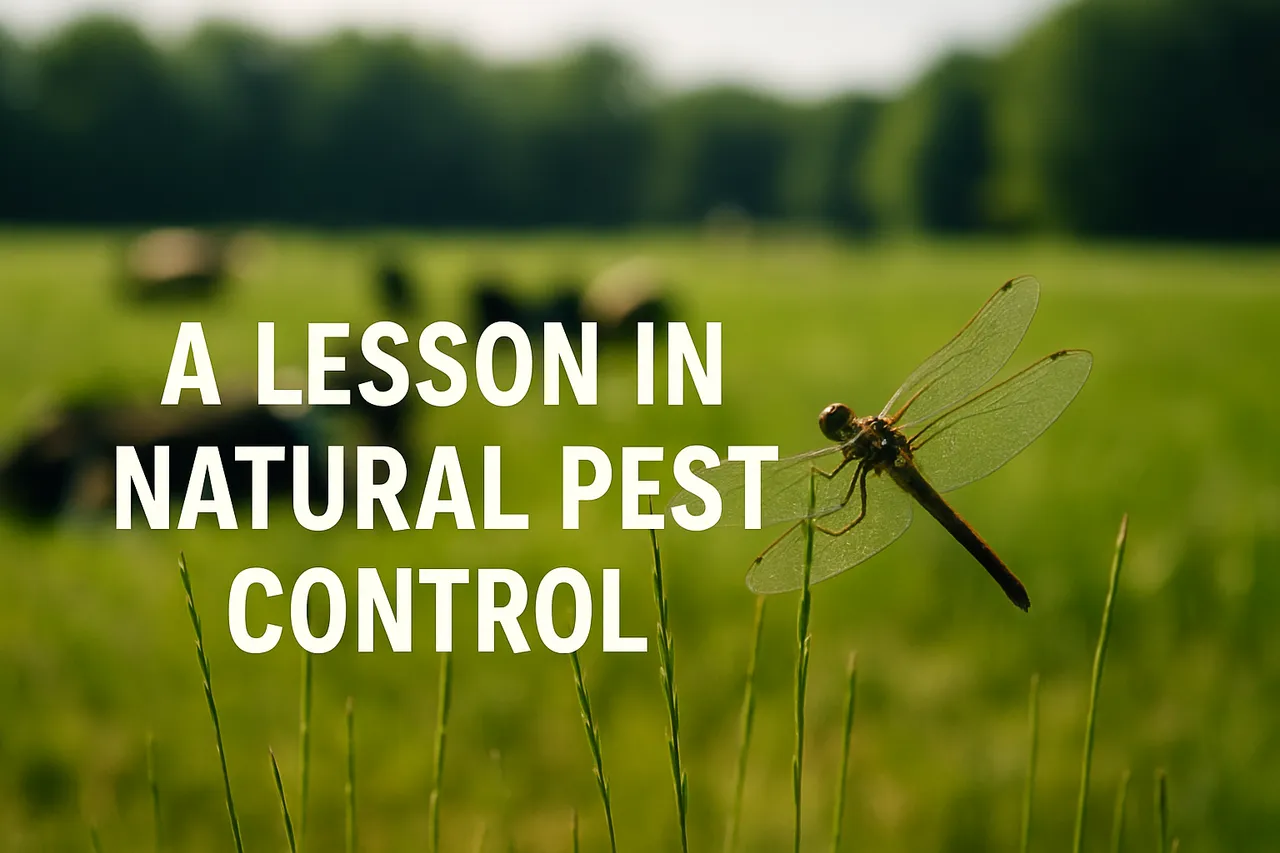I stumbled on the video almost by accident.
It was a quiet evening, the kind where you scroll mindlessly through your X timeline until something unusual catches your eye. This time, it was a video o. Nothing flashy, no dramatic titles, just a calm, clear voice narrating over shots of cows grazing in peace. But within minutes, I was glued to my screen.
What caught my attention wasn’t the cows. It was what was missing - flies. There were no flies buzzing around their ears, no tail-whipping or twitchy movements. The narrator, a farmer himself, explained the trick:
I didn’t use chemicals. I just planted grasses. Now the dragonflies handle the rest.
I sat up. Dragonflies? Pest control? My curiosity went from 0 to 100.
The Apex Predator You Never Knew About
As the video played on, the farmer showed how he transformed his environment into a dragonfly paradise. He didn’t bring them in or breed them; he simply planted millions of grass stems, creating a jungle of perches. Dragonflies, being the visual hunters they are, need tall grass to perch, spot their prey, and soak up sun for energy.
Turns out, dragonflies are apex predators in the insect world. Their eyesight is near panoramic, they’re agile in flight, and they can catch their prey midair with deadly precision. One dragonfly can consume hundreds of insects per day, and they aren’t picky. They’ll go for mosquitoes, gnats, and yes, those nasty flies that harass livestock.
The farmer explained that flies had always been a headache on his farm. Every cattle owner knows how irritating and disease-spreading they can be. But instead of reaching for pesticides, he tried something different. He studied the environment. He noticed that wherever dragonflies congregated, especially near swampy or grassy areas, there were fewer flies.
So, he recreated that same environment. Within weeks, he noticed a difference. No expensive sprays. No chemicals in the soil. Just grasses and the patient watch of winged predators.

Nature’s Pest Control at Work
As I watched the footage, dragonflies darting back and forth like fighter jets, I was blown away by how elegantly nature works when left to do its thing. This farmer didn’t just control pests; he invited balance. The dragonflies thrived because the environment welcomed them. The flies disappeared because they were outmatched.
And the cows? They were calmer. Happier. Healthier.
This wasn’t some million-dollar innovation. It was biological control, a method that’s been around forever but is rarely appreciated in modern agriculture. When you use one part of an ecosystem to manage another, like encouraging ladybugs to eat aphids, or frogs to eat mosquitoes, you’re applying biological control.
And here, dragonflies were the solution to a problem that many farmers spend money and chemicals fighting.
The Science Behind It
I did a bit of digging after the video. Dragonflies are considered indicator species in ecology. That means when they’re present, it signals a healthy, balanced environment. Their life cycle starts in water, so they need clean water sources to lay eggs. But their adult stage depends on land, specifically, grassy or wetland areas where they can perch and hunt.
They also don’t target beneficial insects like bees. Their focus is on the real nuisances, such as flies, mosquitoes, and midges. This makes them ideal for targeted, natural pest control, especially in livestock environments.
What the farmer did was ecological engineering, even if he didn’t call it that. By changing the structure of his farm, introducing grass stems, avoiding harmful pesticides, and letting insects come naturally, he created a mini-ecosystem that was self-regulating.
Lessons from a 3-Minute Video
That 3-minute clip taught me more than hours of reading about synthetic pesticides ever could. It reminded me of a simple but powerful truth that nature already knows how to balance itself; we just need to help it.
Watching that video, I realized how much of modern farming, and even gardening ignores these kinds of solutions. We’re so quick to buy chemical fixes that we forget nature had its own strategies long before we came around.
And the best part? This method isn’t just for large farms. If you have a garden, a small water feature, or a compound prone to bugs, you too can attract dragonflies. Just plant native grasses, avoid pesticides, and give them room to hunt.
They’ll take care of the rest.
In Conclusion
So now, whenever I hear a buzzing fly or see someone reaching for a can of insecticide, I think back to that video. I think about a quiet farm, dragonflies patrolling the skies, and cows at peace. And I wonder, how many problems have we overcomplicated simply because we didn’t trust nature enough?
Sometimes, the smartest solutions don’t come in spray bottles; they come with wings and instinct.
Resources
- National Wildlife Federation – Dragonflies as Natural Predators
- Scientific American – Dragonflies Are Brutal Predators
- University of Florida IFAS Extension – Using Beneficial Insects for Pest Control
- FAO – Biological Control: A Safer Alternative to Pesticides
- The Xerces Society – Creating Habitat for Insect Predators